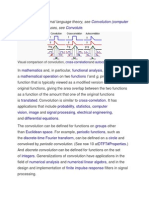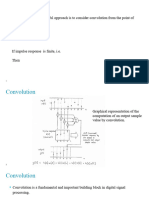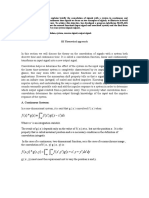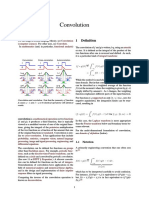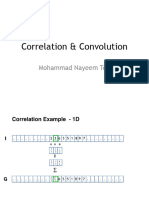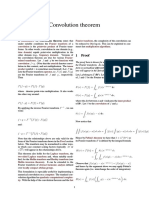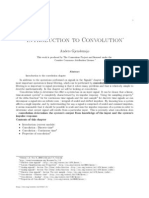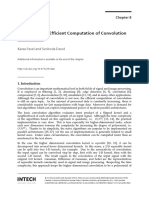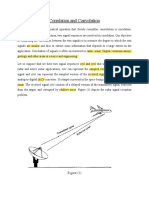0% found this document useful (0 votes)
118 views4 pagesConvolution and Correlation: Computer Vision CITS4240
Convolution and correlation are methods to apply spatial filters to an image. Convolution involves flipping a filter function and sliding it across an image to integrate the overlapping areas. Correlation is similar but does not require flipping the filter function. Both operations are used in computer vision tasks to analyze image features.
Uploaded by
kuzeyscCopyright
© Attribution Non-Commercial (BY-NC)
We take content rights seriously. If you suspect this is your content, claim it here.
Available Formats
Download as PDF, TXT or read online on Scribd
0% found this document useful (0 votes)
118 views4 pagesConvolution and Correlation: Computer Vision CITS4240
Convolution and correlation are methods to apply spatial filters to an image. Convolution involves flipping a filter function and sliding it across an image to integrate the overlapping areas. Correlation is similar but does not require flipping the filter function. Both operations are used in computer vision tasks to analyze image features.
Uploaded by
kuzeyscCopyright
© Attribution Non-Commercial (BY-NC)
We take content rights seriously. If you suspect this is your content, claim it here.
Available Formats
Download as PDF, TXT or read online on Scribd
/ 4










